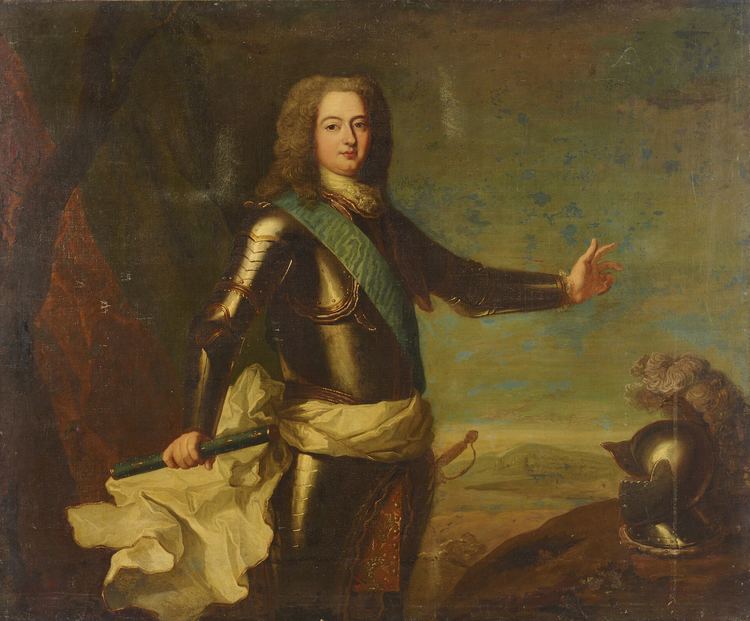Religion Roman Catholicism Name Charles, of | Signature | |
 | ||
Born 19 June 1700
Chateau de Chantilly, France ( 1700-06-19 ) Died 23 July 1760(1760-07-23) (aged 60)
Paris, France Burial Eglise Collegiale Saint-Martin, Montmorency, France Father Louis de Bourbon, Prince of Conde Mother Louise-Francoise de Bourbon | ||
Charles de Bourbon-Conde, Count of Charolais (19 June 1700 – 23 July 1760), was a French noble. As a member of the reigning House of Bourbon, he was a Prince of the Blood.
Contents
Biography
The second son of Louis III, Prince of Conde, and Louise-Francoise de Bourbon, Charles de Bourbon-Conde was made governor of Touraine in 1720. He fought in Hungary in the war against the Ottoman Turks and won distinction at the battle of Belgrade. In 1728 he became one of the candidates for the hand of the wealthy heiress Maria Zofia Sieniawska, supported by Louis XV in an attempt to gain a strong position in Poland before the royal election. He was gouverneur of his nephew Louis Joseph, Prince of Conde.
Debauched, violent, wrathful, sadistic, bloodthirsty and occasionally murderous, barely within the bounds of sanity, and incredibly arrogant, not least on account of his rank, which gave him gross impunity as a royal prince, Charles, Count of Charolais, never ceased to appear in the news of his time. Heredity may have played a part, as his father Louis was popularly known as le Singe Vert, or the Green Monkey, to his contemporaries because of his ugliness and depravities. Perhaps unsurprisingly given his rank, overwhelming police reports about Charles de Bourbon were long kept secret. These relate, among other appalling depravities, Charles's kidnap and detainment of women and girls for use in sadistic orgies he arranged with other debauchees. Some historians have seen in him an inspiration for certain characters in the novels of the Marquis de Sade.
In one particular instance, in the street and in front of witnesses, this nobleman, a relative of the king, fired his pistol and killed, coldly and without reason other than his own pleasure, a man who had the misfortune of being within reach of his weapon. The regent Philippe d'Orleans was truly shocked by this heinous crime, and summoned the count to say that, while he could not punish him on account of his rank, he would willingly forgive anyone who took reciprocal action.
Another story tells of how in a drunken rage, he assaulted and badly injured the unfortunate driver of the Spanish ambassador who had parked his carriage in an alley beside the Louvre usually reserved for cars of the princes of the blood.
He secretly married Jeanne de Valois-Saint Remy, a descendent of Henri II via an illegitimate branch; their son Louis-Thomas (1718–1799), who was not legitimated by the king, was later exiled to England.
He had two illegitimate children with Marguerite Caron de Rancurel:
On his death the county of Charolais reverted to the king. Some years later it was granted to a brother of the future Louis-Philippe of France.
He was buried at the Eglise Collegiale Saint-Martin, Montmorency.
